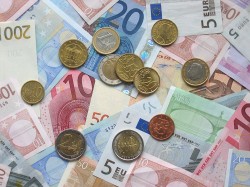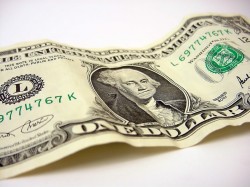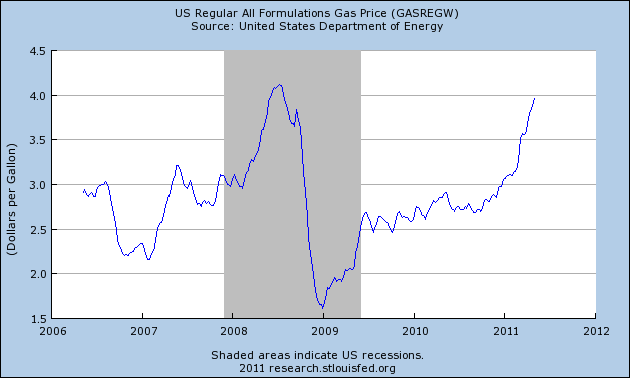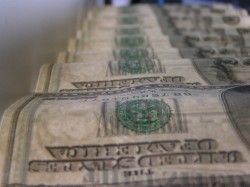 The euro was a doomed project from the start, and now we are starting to see the endgame play out. Today, the euro fell to an 11-month low against the U.S. dollar. As I write this, the EUR/USD is at 1.2983. Back in July, the EUR/USD was over 1.45. As panic has swept the financial markets, the euro has lost more than 3 percent over the past three days. But this is just the beginning. When the euro drops below 1.20, analysts will talk about the collapse of the euro. When the euro falls toward parity with the dollar, headlines around the world will scream about the death of the euro. But when the European financial system finally collapses, we may very well actually see the end of the euro. Yes, it actually could happen. The eurozone, as it is currently constructed, simply does not work. You just can’t take 17 different nations that have 17 different fiscal policies, 17 different tax policies and 17 different economic agendas and cram them all into a single currency and expect the thing to work. The euro is a doomed currency, and if a big nation like Germany decides to walk away at some point the game is going to be over.
The euro was a doomed project from the start, and now we are starting to see the endgame play out. Today, the euro fell to an 11-month low against the U.S. dollar. As I write this, the EUR/USD is at 1.2983. Back in July, the EUR/USD was over 1.45. As panic has swept the financial markets, the euro has lost more than 3 percent over the past three days. But this is just the beginning. When the euro drops below 1.20, analysts will talk about the collapse of the euro. When the euro falls toward parity with the dollar, headlines around the world will scream about the death of the euro. But when the European financial system finally collapses, we may very well actually see the end of the euro. Yes, it actually could happen. The eurozone, as it is currently constructed, simply does not work. You just can’t take 17 different nations that have 17 different fiscal policies, 17 different tax policies and 17 different economic agendas and cram them all into a single currency and expect the thing to work. The euro is a doomed currency, and if a big nation like Germany decides to walk away at some point the game is going to be over.
It is not as if the euro is just having a bad week. Just check out this chart that shows what the euro has done relative to the U.S. dollar over the past 6 months.
The truth is that a collapse of the euro has already begun.
And a whole lot of investors expect it to continue. Right now, huge amounts of money are being poured into bets that the euro is going to go even lower.
All over the world, financial professionals are speculating about how far the euro will eventually fall. Scott Mather, the head of global bond portfolio management at PIMCO, says that he believes that the euro is going to go much, much lower….
“Parity with the dollar next year is not out of the question”
Of course the central banks of the world could step in at some point with coordinated action to help support the value of the euro. This kind of thing has happened before. But such support would only be temporary.
Central banks can manipulate the markets for a while, but in the end the long-term trends are going to prevail. Just look at what is happening with European bond yields.
European bond yields are rising once again even though the European Central Bank has already spent over 274 billion dollars buying up European government bonds.
There will be more efforts to try to prevent the death of the euro, but those efforts will be kind of like spitting into the wind.
A recent article posted on Crackerjack Finance talked about some of the fundamental problems that make the euro such a flawed currency….
The problems of the Eurozone’s flawed construct are now completely exposed. A block of 17 sovereign nations have adopted a common currency and outsourced monetary policy to a common central bank. Yet each of the 17 sovereign nations have different comparative advantages, industries, debt levels, interest rates, budget deficits, labor market rules, and tax policies. Reflecting on all the differences, it is amazing that the Eurozone has survived in the current construct for over a decade.
Greece would probably not be going through an economic depression right now if they had not joined the euro. But now, 100,000 businesses have closed since the beginning of the recent crisis and a third of the country is living in poverty.
As this crisis spreads throughout the rest of Europe, it is going to put an incredible amount of stress on the European financial system. Many now believe that the euro may not be able to make it through the tough times that are ahead.
The following comes from a report recently produced by Credit Suisse’s Fixed Income Research unit….
“We seem to have entered the last days of the euro as we currently know it. That doesn’t make a break-up very likely, but it does mean some extraordinary things will almost certainly need to happen – probably by mid-January – to prevent the progressive closure of all the euro zone sovereign bond markets, potentially accompanied by escalating runs on even the strongest banks.”
So will we actually see the end of the euro?
Only time will tell.
But one thing is for sure – the situation in Europe is rapidly getting worse.
In Greece, approximately 20 percent of all bank deposits have been withdrawn since the start of 2011.
If you still have money in a Greek bank, you might want to do something about it before the run on the banks gets even worse.
In fact, if you still have money in any European bank, you might want to consider your options.
Today it was revealed that Germany’s second largest bank is going to need a bailout.
The following comes from a Sky News report….
Germany’s second largest bank, Commerzbank, is reportedly in discussions with the German government about a bailout after regulators said it needed to raise more money to cope with a potential default on its loans to governments.
“Intense talks” have been going on for several days, according to sources who spoke to the news agency Reuters.
Let the bailouts begin!
European governments are going to save the banks that they want to save, and the rest they are going to let fail.
So who will live and who will die?
We just don’t know.
But without a doubt, a whole lot of European banks are in trouble. In fact, Fitch Ratings downgraded the credit ratings of five more major European banks on Wednesday.
The eurozone worked well for a while, but now the flaws in the system are becoming appallingly evident. To get an idea of just how badly the European financial system is unraveling, just check out this chart. European bond yields are not supposed to be acting like that.
In the end, someone is going to leave the euro. There has been a lot of talk about Greece or Italy leaving the euro, but the truth is that it is probably more likely that a strong nation such as Germany will be the first to make a move.
If Germany leaves the euro, will they start printing up new German currency?
No, I believe in that case that Germany would seek to establish an entirely new European currency for an entirely new European financial system. Germany is very committed to the idea of a “European superstate“, and just because the euro is a failure does not mean that they are ready to give up on the idea.
But time will tell who is right and who is wrong.
For much more on why we are on the verge of a massive financial collapse in Europe, please check out these articles….
*”22 Reasons Why We Could See An Economic Collapse In Europe In 2012”
As I have written about previously, it doesn’t take a genius to figure out what is happening in Europe. The equation is simple….
Brutal austerity + toxic levels of government debt + rising bond yields + a lack of confidence in the financial system + banks that are massively overleveraged + a massive credit crunch = A financial implosion of historic proportions
Unfortunately, the United States is not going to escape all of this chaos unscathed either.
The financial systems of the United States and Europe are more deeply tied together than ever before. When the financial crisis in Europe fully erupts, we are going to see lots of banks in the United States fail too.
The U.S. economy never recovered from the financial crisis of 2008, and this next financial crisis could send us into a huge tailspin.
2012 is going to be a very interesting year for the financial world. I hope that you all are ready for what is about to happen.


